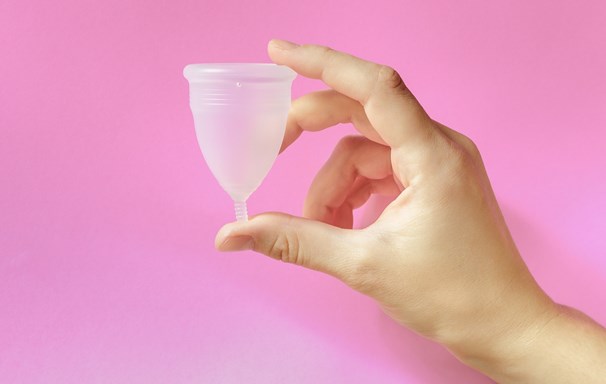
Five things you should know about menstrual cups
An eco-friendly way to manage your period, menstrual cups are growing in popularity.
There are lots of brands out there, but essentially a menstrual cup is a silicone cup that collects your menstrual blood inside your body. You can then empty and clean the cup, ready to reuse. They might sound daunting, but let’s breakdown some must-knows about menstrual cups.
They are really cost-effective.
Imagine never having to buy pads or tampons again. Not only would that be convenient, but it would also save you money. 💸💸💸
Many menstrual cups cost around the $40-$50 mark. Let’s say you ordinarily spend $10 per month on pads and tampons. With a menstrual cup, you’d make back the investment within 5-6 months and still have many years of use to come. If you take care of your menstrual cup, it could even last you up to 10 years. Even if you only used it for a few years, you’d be helping the bank balance.
They are an environmentally friendly option.
Australians buy millions of pads and tampons a year. You might not have known, but pads and tampons have a surprising amount of plastic in them, let alone the plastic wrappers! We all know how harmful plastic is to the environment, but never fear, there are a few brands that can be better for you and the environment. Anyway, back to menstrual cups, as we have just learned, menstrual cups are reusable and can last years!
How’s that for eco-friendly?
They only need to be emptied every 8-12 hours.
Depending on the size of the menstrual cup you purchased and your flow, you can relax knowing that you only need to empty your cup every 8-12 hours. As you learn your body, your flow and the capacity of your cup, it will become clear to you how often you need to empty your cup. Convenient, eh?
Menstrual cups are sometimes demarcated with milliliters, but you can usually check on the manufacturer website for the capacity of your cup. As a side note, knowing how many milliliters you are shedding in a cycle can be super helpful if you need to speak with a health professional about your period.
As an added bonus, cups have a much lower risk of toxic shock syndrome than tampons. But still, always wash your hands before inserting or removing your cup!
They take some practice, but they are super comfortable.
The first time you try a menstrual cup might be completely ridiculous. For many of us, we have no idea how high or low our cervix sits until we try to use a menstrual cup! It’s a real education of our own bodies, one we should be proud of!
The bathroom or shower is a good place to be when you first try to use a menstrual cup but give yourself plenty of time. It’s a learning experience, so try not to get frustrated. Consider wearing a panty liner during those first few trial runs. Leaks are possible when you’re learning how to insert the cup into your very individual body!
Once you’ve mastered the insertion of a menstrual cup, you will really start to notice how comfortable they are. You might even forget you have your period, they’re so comfortable! Because they are made of silicone, they are flexible and move with your body. You can run, jump and swim with a menstrual cup. And unlike a tampon, they aren’t drying. They simply catch the blood, so you can use them at all times throughout your period, no matter the level of your flow!
For more tips on how to use a menstrual cup check this out.
They aren’t as messy or gross as you might think.
You might have horror movie scenes in your head. You might think being so up close and personal with your period blood is gross. But with the right technique, some practice and a shift in mindset, menstrual cups can be clean, not at all gross and very hygienic!
The gist of insertion is to fold the cup (there are lots of methods for this), insert it into your vaginal canal and push it up so it sits high around your cervix. The cervix is where the menstrual blood comes from, so you really need to ensure the cup is sitting around your cervix. You can do this by running your finger around the top of the cup once it is inserted. You will be able to feel whether it unfurled into place and if your cervix is covered by the cup.
Now emptying the cup is something many of us worry about. But once you perfect the technique for removal, it is possible to remove a cup without making a huge mess. You simply pinch the bottom of the cup (this releases the seal) and slowly pull the cup out, ensuring the angle remains the same as your body so it does not spill. For convenience’s sake, many women choose to empty their cup in the shower. You can also empty it over the toilet to help manage any spillage.
There is a little bit of maintenance and basic hygiene associated with a cup. When emptying it, try to rinse it with water (or even wipe with toilet paper). At the end of each period, sterilise it in boiling water. With all the benefits of a menstrual cup, taking these steps doesn’t feel like too much effort.
This list only just scratches the surface. There is an endless supply of menstrual cup information online, including YouTube tutorials. If you’re interested in trying out a cup, do some research and give it a go!
Advocacy & Welfare are here to support all UNE Students.
You’re never alone at UNE.
Contact us at advocacy@une.edu.au or (02) 6773 3116.


